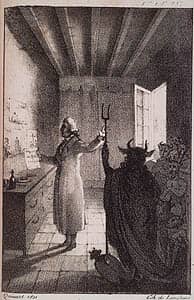 RuneTutor: Practice Tool for
a Three-Runestave ThrowThis page displays a randomly-generated throw of three runestaves, in conjunction with a brief description of a querent (the person for whom a reading is conducted) and a topic of interest. It is intended for study purposes, enabling rune readers to practice giving short readings for a variety of situations. The runestaves can be considered as aspects of the past, present, and future, or simply an interrelated group pertaining to the topic at hand.
To generate a new querent and runestave throw, click the “another reading” button. For maximum benefit, these practice readings should be spoken aloud, as they would be in a normal setting.
Calligraphy for the twenty-four runic symbols used on this page is that of Rudolf Koch (20 November 1876 – 9 April 1934), a leading German calligrapher (with the Gebr. Klingspor foundry), typographic artist, and teacher. Vyvyan Holland’s translation of his Book of Signs, containing 493 old-world symbols, monograms, & runes, was published in 1950 by Dover Publications, Inc., and republished in 1955 as part of their inexpensive Pictorial Archive Series.
The runic literature is quite extensive, some sources more authentic than others (Ralph Blum’s nonsensical book popularized all kinds of foolishness, most notably the notion of a “blank rune”, a contradiction in terms if ever there was one, and completely lacking in historical basis). An excellent academic treatise is Ralph W. V. Elliott’s authoritative Runes: An Introduction. A terrific, inexpensive book on the use of runes for divination is David V. Barrett’s compact Runes. And perhaps the best overall volume is the Complete Illustrated Guide to Runes, by the ever-reliable Nigel Pennick.
      … Doug Dyment … Doug Dyment

|